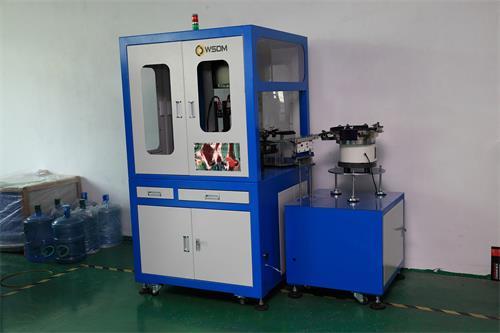Revolutionizing Quality Control: The Role of Automatic Thread Inspection Equipment
In the realm of precision manufacturing, particularly in the optical lens and instrument sector, maintaining high-quality standards is paramount. One of the most significant advancements contributing to this quality assurance is the development of automatic thread inspection equipment. This technology plays a crucial role in inspecting and verifying thread quality, which is vital for the functionality and reliability of optical instruments.
Automatic thread inspection equipment utilizes sophisticated optical scanning technologies to assess the threads' dimensional accuracy, surface quality, and integrity. By leveraging high-resolution cameras and advanced algorithms, these systems are capable of detecting microscopic defects that may compromise the performance of optical instruments. This ensures that only the highest quality threads are used in production, ultimately leading to better product outcomes and enhanced customer satisfaction.
The integration of automatic thread inspection equipment into manufacturing processes offers several advantages. Firstly, it significantly reduces the time required for quality inspections, allowing for faster production cycles. Traditional manual inspections can be time-consuming and prone to human error; however, automated systems provide consistent and reliable results, ensuring that any defects are identified promptly. This not only streamlines the manufacturing process but also minimizes waste and rework, leading to improved operational efficiency.
Moreover, the use of automatic thread inspection equipment contributes to better compliance with industry standards and regulations. In sectors where precision is critical, such as aerospace and medical devices, adhering to strict quality control measures is essential. Automated inspection systems facilitate real-time monitoring and reporting of quality metrics, making it easier for manufacturers to meet regulatory requirements and pass audits.
In addition to enhancing quality assurance, automatic thread inspection equipment supports a culture of continuous improvement within organizations. By providing detailed analytics and insights into production processes, manufacturers can identify trends, monitor performance, and implement corrective actions when necessary. This proactive approach fosters a commitment to quality, enabling companies to stay competitive in a rapidly evolving market.
Furthermore, these advanced inspection systems are versatile and can be adapted to various types of threads and manufacturing environments. Whether dealing with fine optical threads or robust industrial connections, automatic thread inspection equipment can be customized to meet specific requirements, ensuring that it serves a wide range of applications.
In summary, automatic thread inspection equipment is a transformative technology in the optical lens and instrument industry. By enhancing the accuracy and efficiency of quality control processes, this equipment not only improves product quality but also supports manufacturers in achieving operational excellence. As the demand for precision and reliability in optical instruments continues to rise, the role of automatic thread inspection equipment will undoubtedly become even more critical in maintaining industry standards and customer satisfaction.
Automatic thread inspection equipment utilizes sophisticated optical scanning technologies to assess the threads' dimensional accuracy, surface quality, and integrity. By leveraging high-resolution cameras and advanced algorithms, these systems are capable of detecting microscopic defects that may compromise the performance of optical instruments. This ensures that only the highest quality threads are used in production, ultimately leading to better product outcomes and enhanced customer satisfaction.
The integration of automatic thread inspection equipment into manufacturing processes offers several advantages. Firstly, it significantly reduces the time required for quality inspections, allowing for faster production cycles. Traditional manual inspections can be time-consuming and prone to human error; however, automated systems provide consistent and reliable results, ensuring that any defects are identified promptly. This not only streamlines the manufacturing process but also minimizes waste and rework, leading to improved operational efficiency.
Moreover, the use of automatic thread inspection equipment contributes to better compliance with industry standards and regulations. In sectors where precision is critical, such as aerospace and medical devices, adhering to strict quality control measures is essential. Automated inspection systems facilitate real-time monitoring and reporting of quality metrics, making it easier for manufacturers to meet regulatory requirements and pass audits.
In addition to enhancing quality assurance, automatic thread inspection equipment supports a culture of continuous improvement within organizations. By providing detailed analytics and insights into production processes, manufacturers can identify trends, monitor performance, and implement corrective actions when necessary. This proactive approach fosters a commitment to quality, enabling companies to stay competitive in a rapidly evolving market.
Furthermore, these advanced inspection systems are versatile and can be adapted to various types of threads and manufacturing environments. Whether dealing with fine optical threads or robust industrial connections, automatic thread inspection equipment can be customized to meet specific requirements, ensuring that it serves a wide range of applications.
In summary, automatic thread inspection equipment is a transformative technology in the optical lens and instrument industry. By enhancing the accuracy and efficiency of quality control processes, this equipment not only improves product quality but also supports manufacturers in achieving operational excellence. As the demand for precision and reliability in optical instruments continues to rise, the role of automatic thread inspection equipment will undoubtedly become even more critical in maintaining industry standards and customer satisfaction.
Related News













